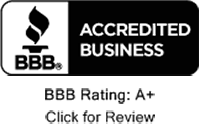Carpenter Ants Mark The Spring Season
Pest Control – Carpenter Ants
Carpenter ants are among the largest ants in Minnesota. There are several species of carpenter ants that may be found infesting homes and other buildings. Normally workers are black or red and black in color and range in size from 3/8 to 1/2 inch. Winged queen ants may be as large as one inch. However, size is not a reliable characteristic to identify carpenter ants. The workers of one species in Minnesota are no larger than 3/16 inch.
Ants are divided into different castes, i.e. workers, queens, and males (figure 1). Some ants, including carpenter ants, have polymorphic workers, which means that within one species the workers occur in different sizes. The best method to separate carpenter ants from other ants is by the following characteristics: 1) a waist with one node (petiole) and 2) a thorax with an evenly rounded upper surface (figure 2).
There are other ants that appear similar and are occasionally mistaken for carpenter ants. They may have one or two nodes. However, they can be distinguished from carpenter ants by the uneven profile of their thorax (figure 3). These ants are usually not wood-infesting, so it is important to correctly identify the ants before control is attempted as control strategies vary with different ant species.
Ants or Termites?
Carpenter ants differ from termites by having dark-colored bodies, narrow waists, elbowed (bent) antennae, and if present, hind wings shorter than front wings (figure 4). Carpenter ants are very common and are frequently seen in the open.
Termites are light-colored, have no waist constriction, have straight antennae and, if present, wings are of equal length (figure 5). Termites are much less common. They avoid light and are rarely seen outside of their colony.
What They Eat
Carpenter ants feed on sources of protein and sugar. Outdoors, carpenter ants feed on living and dead insects. They are also very attracted to honeydew, a sweet liquid produced by aphids and scale insects. Aphids and scales feed on trees, shrubs, and other plants. Indoors, carpenter ants feed on meats, as well as syrup, honey, sugar, jelly, and other sweets. Carpenter ants DO NOT eat wood. They remove wood as they create galleries and tunnels.
Most foraging is done at night between sunset and midnight during spring and summer months. Sometimes workers travel up to 100 yards from a nest in search of food.
Where They Live
Carpenter ants nest in moist wood including rotting trees, tree roots, tree stumps, and logs or boards lying on or buried in the ground. They can also nest in moist or decayed wood inside buildings. Wood decay may be caused by exposure to leaks, condensation, or poor air circulation. Nests have been found behind bathroom tiles; around tubs, sinks, showers, and dishwashers; under roofing, in attic beams, and under subfloor insulation; and in hollow spaces such as doors, curtain rods, and wall voids. Carpenter ants may also nest in foam insulation.
A parent carpenter ant colony sometimes establishes one or more satellite nests in nearby indoor or outdoor sites. Satellite nests are composed of workers, pupae, and mature larvae. A satellite nest does not require moisture because the workers do not tend eggs (the eggs would dry out without sufficient humidity). For this reason, satellite nests can be found in relatively dry locations, such as insulation, hollow doors, and sound wood. The workers of satellite colonies move readily between their nest and the parent colony. In late summer, winged reproductives (i.e. queens and males) may emerge from pupae transported into satellite colonies. They may appear in structures in late winter and early spring as they swarm from a satellite nest.
Damage
Carpenter ants damage wood by excavating and creating galleries and tunnels. These areas are clean, i.e. they do not contain sawdust or other debris, and are smooth, with a well sanded appearance (figure 6).
The damage to wood structures is variable. The longer a colony is present in a structure, the greater the damage that can be done. If structural wood is weakened, carpenter ant damage can be severe.
Carpenter Ant Pest Removal
The best method to control carpenter ants is to locate and destroy the nest, replace damaged or decayed wood, and, if they exist, eliminate moisture problems. Eliminating a carpenter ant nest is a difficult and challenging task. It is possible for a homeowner to control carpenter ants on their own. However, in most cases, control should be performed by an experienced pest control expert. They have the experience and a wider array of products to more effectively control a carpenter ant problem. Homeowners can still play an important role in control programs by providing information to a Minnesota pest control expert, such as when, where, and how many ants were seen.









